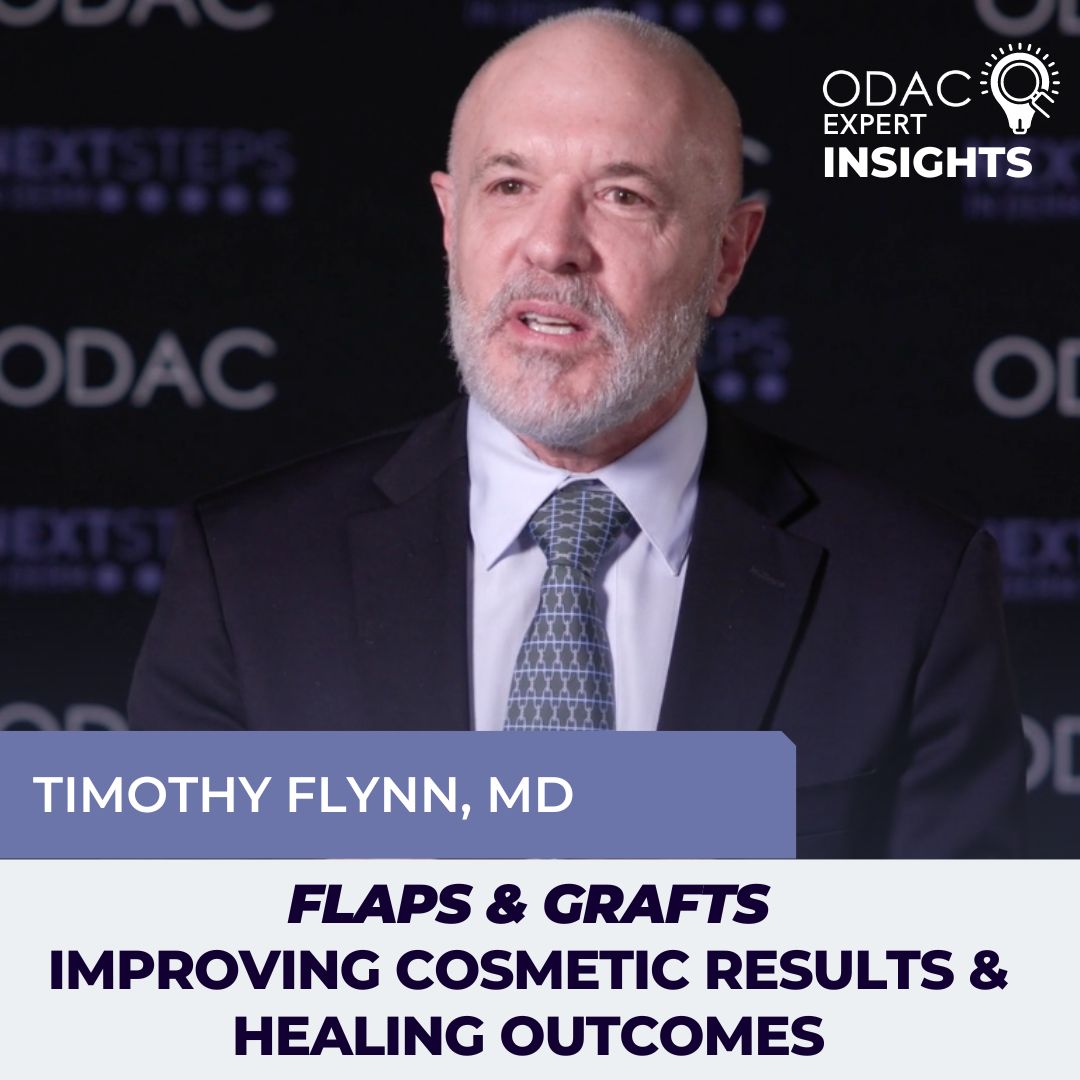Next Steps in Derm, in partnership with ODAC Dermatology, Aesthetic & Surgical Conference, interviewed Dr. Timothy C. Flynn, a dermatologic and Mohs surgeon in Cary, N.C. Watch as Dr. Flynn encourages dermatologic surgeons to know the advantages and disadvantages of available flaps and grafts. Find out why he recommends trying split thickness grafts, and learn how a simple book of photos can go a long way in educating patients and reducing calls back to the office. Plus don’t forget the final result! Dr. Flynn also shares ways to address scars.
Further Reading
If you want to read more about using flaps and grafts, check out the following articles published in the Journal of Drugs in Dermatology:
The Transposition Flap for the Reconstruction of Lower Cutaneous Lip Defects
ABSTRACT
The lower cutaneous lip is a highly visible and functionally sensitive unit, and numerous factors must be considered when deciding on the optimal repair for defects in this area. The transposition flap represents an excellent option in the reconstruction of larger lower cutaneous lip defects. We describe the use of random pattern transposition flaps for the repair of lower lateral cutaneous lip defects.
Reconstructing the Glabella and Nasal Root
ABSTRACT
Defects involving the glabella and nasal root require an optimal cosmetic outcome due to its critical position in the mid-face. Glabellar defects often involve multiple cosmetic subunits, hair variations, and various skin thicknesses (forehead superiorly, eyebrows / eyelids laterally, nasal root and dorsum inferiorly), further complicating the reconstruction. The eyebrows and natural concavity of this area must be preserved if possible. Repair options in this location vary by personal preference and experience rather than literature-based outcomes. Key considerations include the location of the defect (glabella vs nasal root +/- brow +/- medial canthus), the position of the defect (midline or off-center) and the texture/thickness of the skin (thick glabellar skin or thin skin of medial canthus). The rich blood supply in this area has made local flaps the preferred option for moderate to large defects. However, two pitfalls for local flaps are pincushioning resulting in a “bull nose” and the possibility of causing synophrys. Often, a combination of flaps, grafts, and/or primary closures are necessary to adequately close large glabellar/nasal root defects. There is a paucity of literature for reconstructive options of the glabella and nasal root, and in the authors’ experience, even experienced surgeons struggle to decide on these. We present a series of reconstructive approaches for the majority of moderate to large cutaneous glabellar and nasal root defects with excellent functional and aesthetic results.
Did you enjoy this video interview? Find more here.

